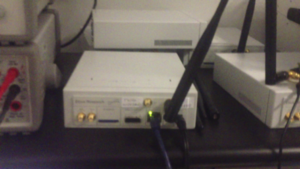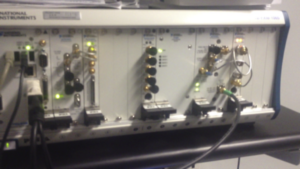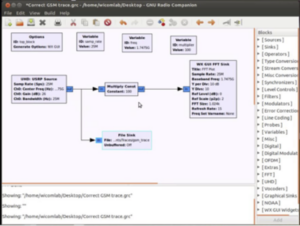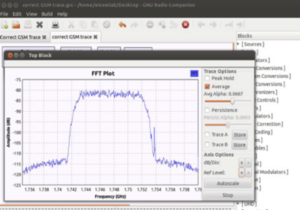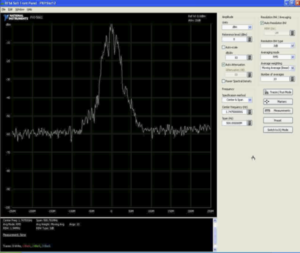Data-Driven Radio Frequency Learning and Spectrum Sharing in Congested and Contested Wireless Environment
Cooperative Agreement No. W911NF-23-1-0214
Duration: June 1, 2023 – May 31, 2027
PI: Lijun Qian, Ph.D. Co-PIs: Pamela Obiomon, Xiangfang (Lindsey) Li
Department of Electrical & Computer Engineering
Roy G. Perry College of Engineering
Prairie View A&M University
Prairie View, TX 77446
Project Summary:
In modern warfare, the coexistence of heterogeneous wireless systems with a large number of inter-connected devices and adversarial wireless systems will result in a highly congested and contested radio frequency (RF) environment. Therefore, an efficient and secure use of spectrum is essential. However, there exist many challenges: (1) multiple wireless transmissions may happen in the same frequency band at the same time (either due to spectrum sharing, say NOMA, or attacks) that result in superposed RF traces, and there is very limited or no prior knowledge of the potential (adversarial) wireless systems; (2) robust throughput at the physical and MAC layer is hard to achieve due to the competition by a large number of wireless devices and diverse wireless technologies they employ; (3) impersonation attacks are hard to detect or prevent when an attacker choose to mimic legitimate users by using the same wireless devices and the same waveform; (4) validation needs to be done using real-world data. The proposed research will address these fundamental challenges with a data-driven approach, and an RF learning framework is proposed to achieve situational awareness in the RF domain for complex wireless environments. Specifically, four research tasks are proposed: (1) a multi-task learning-based approach is proposed to infer the number of wireless transmissions and the types of waveforms they use in a given spectrum from raw I/Q data; equipped with this knowledge, potential throughput gain at the physical layer will be studied; (2) an optimized MAC protocol will be designed to take advantage of the inferred knowledge from task 1 so that a robust throughput can be achieved; (3) a reconstruction based approach is proposed to detect attacker in RF domain using adversarial autoencoders and generative adversarial networks; (4) Extensive simulations using MATLAB and NS-2/3 will be performed. Real-world RF traces representing a typical wireless environment will be collected from a Universal Software Radio Peripheral (USRP) based testbed and the POWDER testbed. The data will be curated and stored in a repository. Deep learning experiments using various software platforms will be carried out and a visualization tool will be developed to validate the proposed approach. Together they provide secure and intelligent spectrum sharing through RF learning to improve the robustness and security of future wireless systems. It will foster cross-fertilization of ideas from different research societies such as wireless networks and machine learning, using a joint theoretical and experimental approach. The proposed activities will support the Department of ECE at Prairie View A&M University (PVAMU), an HBCU, to build a strong research program and increase student enrollment and graduation. Furthermore, the example will lead PVAMU to implement a new paradigm in research and education for building institutional capacity beyond traditional teaching programs. It will greatly improve African American students’ participation in high-tech engineering research and train them to be the future workforce that is extremely valuable to the DOD and the nation.
Results:
I. Publications
The research was sponsored by the Army Research Office and was accomplished under Grant Number W911NF-23-1-0214. The views and conclusions contained in this document are those of the authors and should not be interpreted as representing the official policies, either expressed or implied, of the Army Research Office or the U.S. Government. The U.S. Government is authorized to reproduce and distribute reprints for Government purposes notwithstanding any copyright notation herein.
Journal papers:
- M. Rahman, P. Roy, S. Frizell, L. Qian. (2025) “Evaluating Pretrained Deep Learning Models for Image Classification Against Individual and Ensemble Adversarial Attacks,” in IEEE Access, vol. 13, pp. 35230-35242, 2025, doi: 10.1109/ACCESS.2025.3544107.
- I. Tommy, T. Akinola, X. Li, L. Qian (2025). “Spatio-Temporal Beam-Level Traffic Forecasting in 5G Wireless Systems Using Multi-Task Learning,” submitted to Frontiers in Communications and Networks.
- Z. Zhou, L. Qian, H. Xu (2024). “Decentralized Optimal Navigation and Transmission for Large Scale Mobile Wireless Sensor Networks Using Mean Field Reinforcement Learning,” submitted to the IEEE Internet of Things Journal.
Conference papers:
- T. Abdul-Quddoos, T. Sharmin, X. Li, L. Qian (2025). “Transmitter Identification and Protocol Categorization in Shared Spectrum via Multi-Task RF Classification at the Network Edge,” The Third Workshop on Machine Learning and Deep Learning for Wireless Security, ICC 2025.
- I. Tommy, X. Li, L. Qian (2025). “Spatio-Temporal Beam-Level Traffic Forecasting in 5G Wireless Systems Using Multi-Task Learning,” 2025 IEEE International Conference on Machine Learning for Communication and Networking (ICMLCN).
- M. Rahman, L Li, L. Qian, M. Huang (2024). “Comparative Analysis of Inference Performance of Pre-trained Deep Neural Networks in Analog Accelerators,” IEEE International Conference on Machine Learning and Applications (ICMLA 2024), Miami, FL.
- O. Adegboye, X. Li, L. Qian. (2024). “Parameterized Model for Fork Antenna Design in UWB Band Using Fully Connected Artificial Neural Networks,” The 26th Int’l Conf on Artificial Intelligence (ICAI’24).
II. Setup of the testbed and RF data collection
1) Setup of the testbed
-
-
- Collection of Radio frequency (RF) signals over a wide range of spectrum requires receiver units that can be configured to scan a range of frequency bands within 50MHz-8GHz. The modular design of Universal Software Radio Peripheral (USRP2) allows the extension of the basic system using various daughter boards for RF transmitters and/or receivers at different frequency bands. USRP2 also features two 400MS/s 16-bit digital-to-analog converters and is capable of processing signals up to 100MHz wide.
-
2) Experimental results and RF traces
-
-
- Coming soon.
-
III. Source codes and software tools
1) Source codes:
-
-
- Coming soon.
-
2) Software tools:
-
-
- GNUradio: http://gnuradio.org
-
- NI LabVIEW: http://www.ni.com/labview/
-
Contact information:
Office: NENR Building Room 332Phone: (936) 261-9908
Fax: (936) 261-9930
E-mail: Lijun Qian
Last Modified: August 2025


